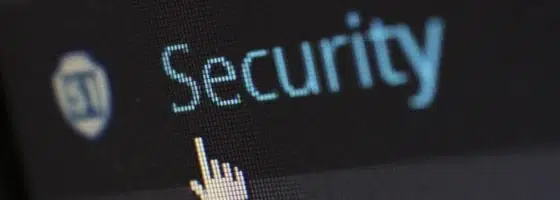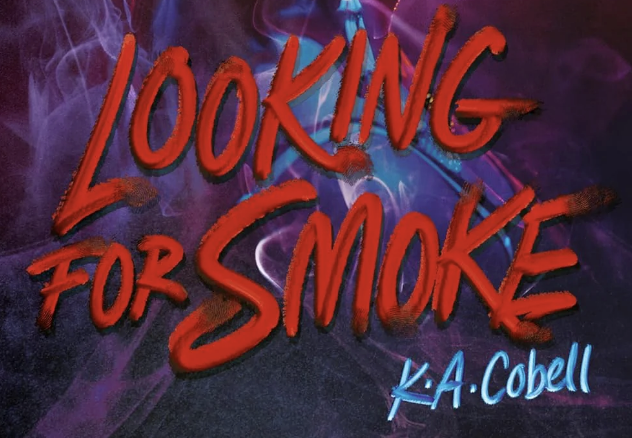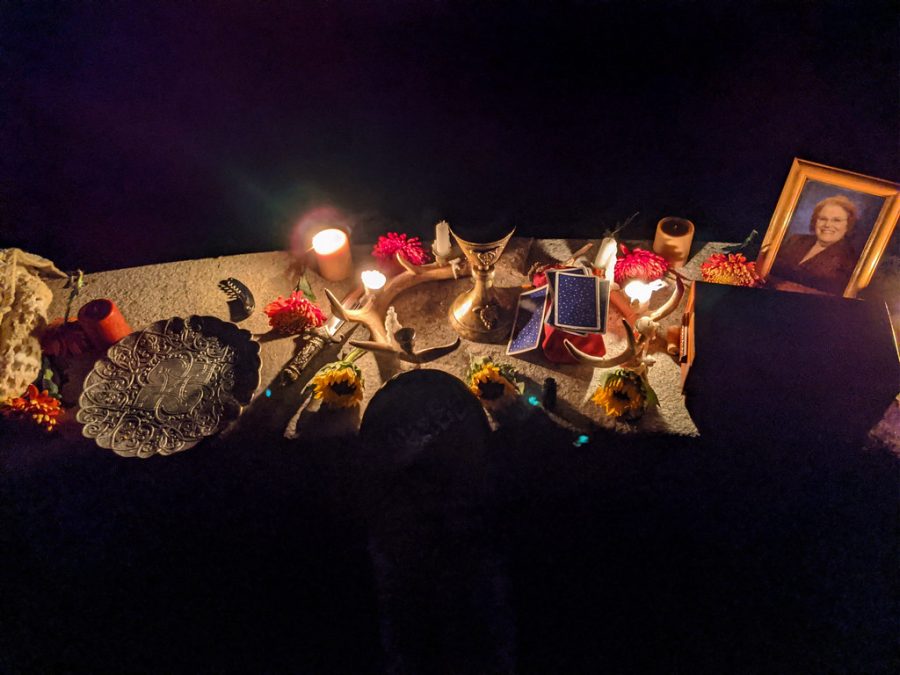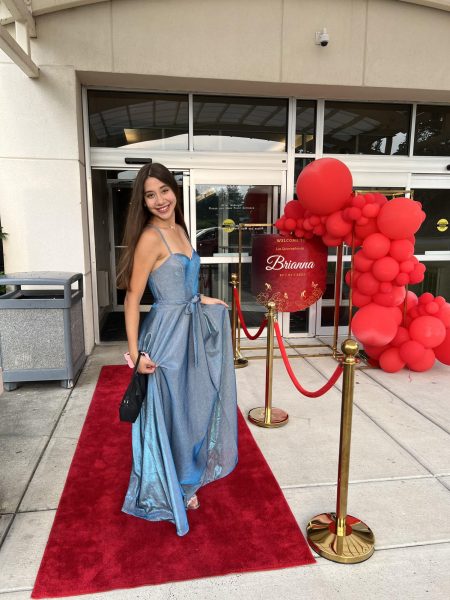History of Samhain: the Original Halloween
A Samhain altar.
October 26, 2022
Halloween is by far the most commercially celebrated holiday in the month of October in the US. This year, already, people have spent 3.1 billion dollars on candy to pass out to little trick or treaters. People host parties and dress up as their favorite characters. In fact, there have even been posts on social media about potential costumes since the summertime. But Halloween shares a day with another special occasion, a much older tradition. This would be the Gaelic festival of Samhain (pronounced saa-win). It marks the end of the harvest, and for people who deeply follow old tradition, the beginning of the second half of the year. Samhain is also considered to be the day where the spirit world is closest to the physical world. The festival is also popular with witchcraft practitioners, especially those that follow European folk traditions or those who are Wiccan. How did this festival have any relation to Halloween, and what is it all about?
First, we must take a look at the ancient Celts. They have quarterly fire festivals every year following things like the equinoxes and solstices. Their traditions often follow pagan religion, and some are, as mentioned before, still observed. Back in the day, religious leaders, called druids, would organize a sort of communal bonfire, where rituals, sacrifices (mostly cattle), and prayers would be take place. It was a pretty big deal, so much so that if you skipped out on the celebrations, which would usually last a couple of days, you would be considered to be, in a sense, doomed. People also partied and drank a lot. But the significance of the day again comes back to the idea that the spirit world was reachable. Fae and ancestors would receive offerings left out. The day also had its own mythos, so specific deities, like Pukahs or Lady Gwyn, would have particular meaning with their association to either the harvest or the Underworld, and as such would often be specifically targeted in offerings. If you were brave, some would even go straight to the burial grounds for their practice. Also, people practiced divination rituals, which among the modern witchcraft practitioning community, is par for the course on this day.
As time went on, traditions changed. More of the older iterations of modern traditions showed up. The first carved Jack O’ Lanterns were turnips, with the Irish switching to pumpkins eventually. We also have ‘Dumb Suppers’, where people would invite the dead to eat, the adults informing them on what’s been going on and children would play games to amuse them. Also, costumes and masks would be worn to protect against evil spirits, with children even going door to door ‘mumming’, meaning they sang for the dead, in which houses would repay them with cake. It became more common to include these traditions when Christianity incorporated it in the form of All Hallows Eve, and here we get traditions like the costumes and the Jack O’ Lanterns getting adopted. Eventually, this would simply turn into Halloween, and nowadays the day is pretty secular and commercialized.
In the modern age, the older observation of this holiday is mainly by those who practice witchcraft traditions associated with Europe. It can range from original concepts like dumb suppers, but they mainly obviously center around just any mystical practice, like spells, cleansings, altars, candlework, and the like. Also, it is actually really interesting how many celebrate even just by associating with the feeling and aesthetic of the season, taking the time to decorate their abode or dress in appropriate colors. Some even take the time to cook as a means of spellwork, usually incorporating the harvest elements into their dishes by using certain foods and often buying locally.
Overall, Halloween would basically be non-existent without Samhain, and all the mysticality surrounding it. The haunted theme had never gone away and even after hundreds and thousands of years, we still have kept many old traditions to be enjoyed anew. So don’t forget to enjoy and dress-up this Halloween- unless you want to be in trouble with ancient spirits!


























